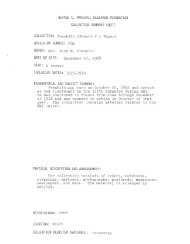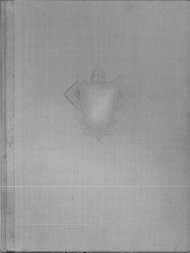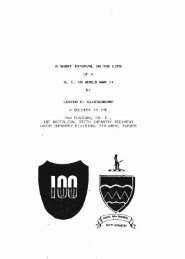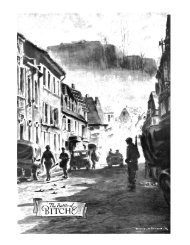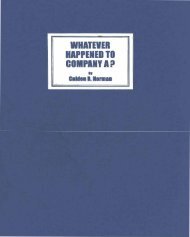Joint Operating Concept (JOC) - GlobalSecurity.org
Joint Operating Concept (JOC) - GlobalSecurity.org
Joint Operating Concept (JOC) - GlobalSecurity.org
You also want an ePaper? Increase the reach of your titles
YUMPU automatically turns print PDFs into web optimized ePapers that Google loves.
Appendix G - A Historical Look at Irregular Warfare<br />
History reveals that violent clashes of interests often include irregular forces or<br />
armed groups that exist outside the authority of established states, with the<br />
United States and other Western nations possessing a rich history of<br />
involvement in operations fighting against irregular threats and fighting<br />
irregularly against their adversaries. From the Indian Wars during the<br />
seventeenth century to Somalia and Bosnia in the 1990s, this long US history of<br />
IW provides a basis for understanding how to confront irregular threats and to<br />
operate more irregularly in the future. Using our long historical experience with<br />
IW combined with an appreciation of the evolving security challenges we face, we<br />
can effectively wage IW against adversaries and counter the irregular threats<br />
that they present.<br />
The chief lesson to be drawn from the study or irregular wars centers around<br />
the importance of operations on an expanded operational continuum. In case<br />
after case, to be successful, the military intervention force worked in LOOs<br />
(though they may not have called it that) beyond purely kinetic combat<br />
operations. The participants seemed deliberately to blur the lines between types<br />
of operations. That is, the military became comfortable working with other<br />
agencies and even performed tasks that would not be associated with a<br />
traditional military mission. These historical examples will show both some<br />
similarities and very notable differences. Irregular wars are different from each<br />
other; at least to the extent that no solutions can be “templated.” IW doctrine<br />
therefore must be written with great flexibility in mind. History can help<br />
understand the character of a conflict by providing context and can help prepare<br />
for future challenges by showing what worked (or failed to work) in the past.<br />
Examples of Countering Irregular Threats:<br />
The Philippine Insurrection (1899 - 1913). Following the 1898 US<br />
acquisition of the Philippines in the aftermath of the Spanish-American War, the<br />
US military was dispatched to that area to seize control of the islands. In<br />
response to the imminent US seizure, the Filipinos led an insurrection against<br />
US occupation. President William McKinley decided that a policy of assimilation<br />
should be adopted in the Philippines and carried out by the US military. This<br />
shift forced the US military (the Army in particular) to devote at least as much<br />
attention to civic projects—public works, government-building, and education—<br />
as to more traditional military operations. While military operations were never<br />
independently decisive during the Philippine Insurrection, the US military wove<br />
them effectively into the fabric of counterinsurgency and what we would now call<br />
“nation-building” activities. The insurgents were worn down, their re-supply cut<br />
off, and ultimately were chased into the most remote, rural parts of the islands,<br />
separating them from the populace. Meanwhile, the US military built<br />
infrastructure, formed and trained Filipino police and military forces, and<br />
established schools and rule of law. While the leader of the insurgency was<br />
eventually captured, the population had already begun to see the advantages of<br />
Appendix G G-1




